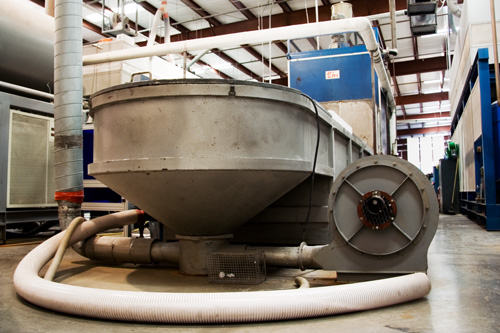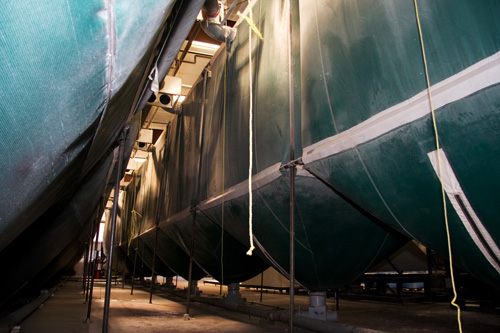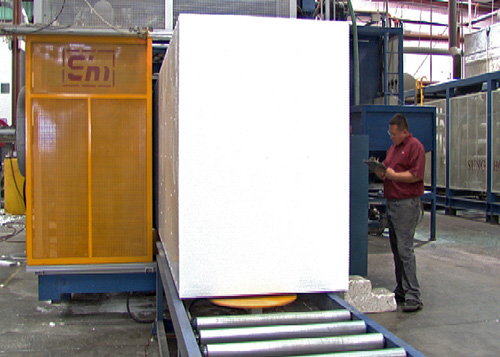Making ProWall EPS Foam
EPS foam is an amazingly versatile product. It is strong, lightweight, durable, highly-insulating and can be formed into almost any shape. No wonder it’s been incorporated into so many building and manufacturing processes.
At ProWall we take pride in producing the finest quality EPS products for a range of customers.

EPS begins as tiny resin beads, which are expanded and then molded into blocks for a variety of applications.
|
ProWall EPS Starts as Resin
All of our foam products begin as small (.5 to 1.3 mm) beads of polystyrene resin. These resin beads are formulated by the manufacturer to contain pentane, a naturally occurring gas.
The process begins by transferring carefully measured quantities of resin into our pre-expanding machine. There, they are injected into the expander and introduced to steam and agitated. This releases the pentane gas that is impregnated into the resin causing the beads to expand 50 times their original size.

Resin beads are introduced into the pre-expander and bed dryer.
|
Expansion: The Next Step
Next, the expanded beads are dried in our bed dryer and transported into vast open storage bags to be aged. At this point, the expanded beads contain millions of cells with an internal vacuum. The aging process allows each bead to equalize with atmospheric pressure.
We age the beads anywhere from 12 hours to two days, depending upon the desired bead density for the particular product. We make densities ranging from 1 pcf upwards to nearly 3 pcf.

Expanded beads are stored in vast open bags to equalize to the correct level of pressure.
|
Finally, we take the loose expanded beads and form them into a solid block mass with a vacuum assisted block mold. By utilizing a system of sophisticated metering devices, our computer controls the exact weight and density of beads introduced into the mold. Once the mold cavity is filled, the computer uses a vacuum system to evacuate any residual air.
Molding and Steam Rinsing
Live steam replaces the vacuum and flows over the entire mass of beads in the cavity, a rinsing process that softens the polymer structure of the bead surface. It is immediately followed by the pressurization of the mold cavity with more live steam. The latent heat from the steam and subsequent pressure increase causes the beads to further expand.

A block of EPS emerges from one of ProWall’s molding machines.
|
Fabricating and Shipping
Because this is a confined environment, the only way the beads can expand is to fill up any voids between them, causing the soft surfaces to fuse together into a polyhedral type solid structure. The computer releases the pressure after it reaches its predetermined set point. The loose beads are now fused into a solid block.
Once the blocks roll off the molding machine, they are cured and later cut into billets, sheets and other forms requested by our customers.




